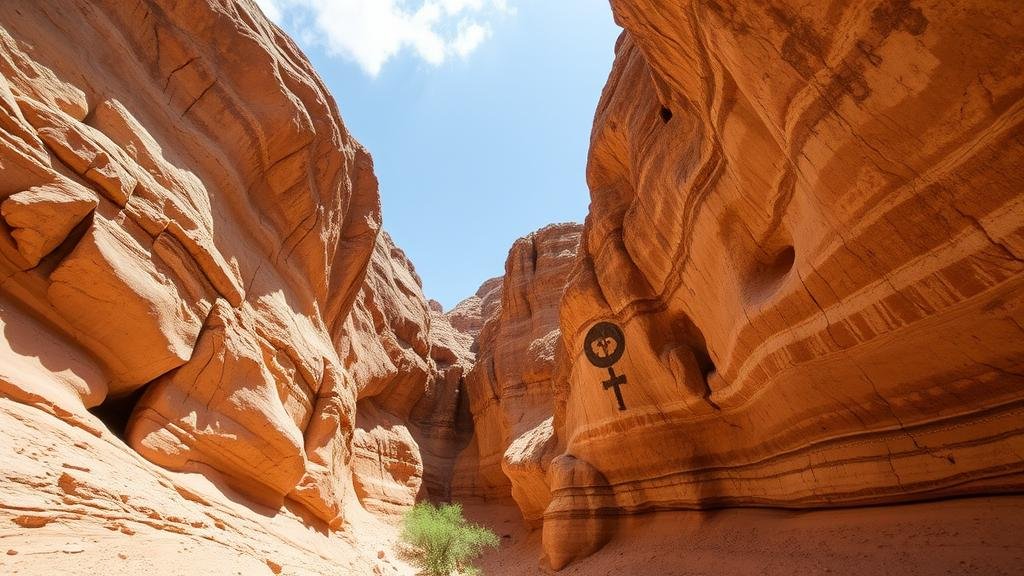Unearthing Rock Paintings and Petroglyphs in Canyon Walls and Caves
Unearthing Rock Paintings and Petroglyphs in Canyon Walls and Caves
Rock paintings and petroglyphs serve as vital windows into the human past, offering insights into the beliefs, laws, customs, and daily activities of ancient cultures. Found predominantly on canyon walls and within caves, these forms of prehistoric art encapsulate a rich narrative that connects us with our ancestors. This article delves into the techniques used to discover and analyze these ancient artworks, the cultural significance they carry, and notable examples from around the world.
The Discovery of Rock Art
Unearthing rock paintings and petroglyphs typically involves a combination of techniques, including archaeological field surveys, remote sensing technologies, and thorough examination of geological contexts. Archaeologists often start with a survey of known archaeological sites, combining historical records with modern technology.
- Archaeological Field Surveys: These surveys are conducted systematically in areas where rock art is suspected to exist by employing techniques such as grid sampling to locate potential sites.
- Remote Sensing: Techniques such as aerial photography and satellite imagery allow researchers to detect nuances in landscape patterns that might indicate rock art locations. For example, LIDAR (Light Detection and Ranging) can penetrate dense vegetation to reveal hidden features.
Once potential sites are identified, a combination of ground-penetrating radar and traditional excavation methods is employed to locate the actual artwork. Recent advancements in technology have allowed archaeologists to document and analyze these findings with greater precision.
Rock art can primarily be categorized into two types: paintings and petroglyphs, each reflecting unique cultural characteristics.
- Rock Paintings: Often created using mineral-based pigments, rock paintings can be found in various colors and styles. paintings can depict a range of subjects, from animals to abstract shapes, serving various functions in ritual or social contexts.
- Petroglyphs: Unlike paintings, petroglyphs are created by carving or pecking designs into the rock surface. These etched symbols often hold significant meanings and can reflect the spiritual beliefs of the people who created them.
For example, the Canyon de Chelly in Arizona features both types of rock art. The rich array of pictographs–illustrated in reds and blacks–depict elements of both daily life and ceremonial practices of the Navajo and Ancestral Puebloan cultures. In contrast, the petroglyphs found in the Valley of Fire State Park in Nevada showcase intricate carvings, some believed to communicate tribal stories or signify territorial boundaries.
Cultural Significance
Rock art is not merely decorative; it plays a critical role in understanding the cultural significance of the societies that created it. Ethnographic studies often reveal that these artworks were not just artistic expressions but served various functions including communal storytelling, religious rituals, and recording historical events.
For example, the rock art of the San people in Southern Africa is believed to be deeply intertwined with their spiritual beliefs and worldview, showcasing their connection with nature. The paintings often represent trance and healing rituals, highlighting how art extends beyond mere aesthetics into the domain of sacred practice.
Challenges in Preservation
The preservation of rock art poses significant challenges due to a multitude of factors, including natural degradation, environmental change, and human activities. Vandalism, tourism, and urban development threaten these ancient sites, necessitating a balance between accessibility and conservation.
- Natural Degradation: Elements such as moisture, temperature fluctuation, foraging animals, and vegetation growth can erode rock surfaces and obscure paintings. Effective conservation measures must be implemented to combat these threats.
- Human Activities: In many regions, rock art sites experience high foot traffic, leading to increased risk of damage. Strategic management plans and educational programs aimed at raising awareness among visitors can significantly mitigate these risks.
Preservation efforts are exemplified by programs in places like Australia, where the Aboriginal Heritage Act protects many rock art sites, providing guidelines for both conservation and respectful visitation.
Conclusion: Actionable Takeaways
Unearthing and preserving rock paintings and petroglyphs is essential for understanding the complexities of human history. To foster greater appreciation and protect these invaluable cultural treasures, several actionable steps can be taken:
- Support Local Archaeological Efforts: Engage with and support organizations dedicated to the preservation of rock art sites.
- Educate and Advocate: Raise awareness about the importance of rock art in cultural heritage and the need for conservation.
- Practice Responsible Tourism: When visiting rock art sites, adhere to guidelines set by local authorities, and refrain from touching, altering, or tagging these historical remnants.
The appreciation and preservation of rock art stand as crucial pillars in understanding our shared history and ensuring that future generations can also engage with the deep narratives echoed in canyon walls and caves.



